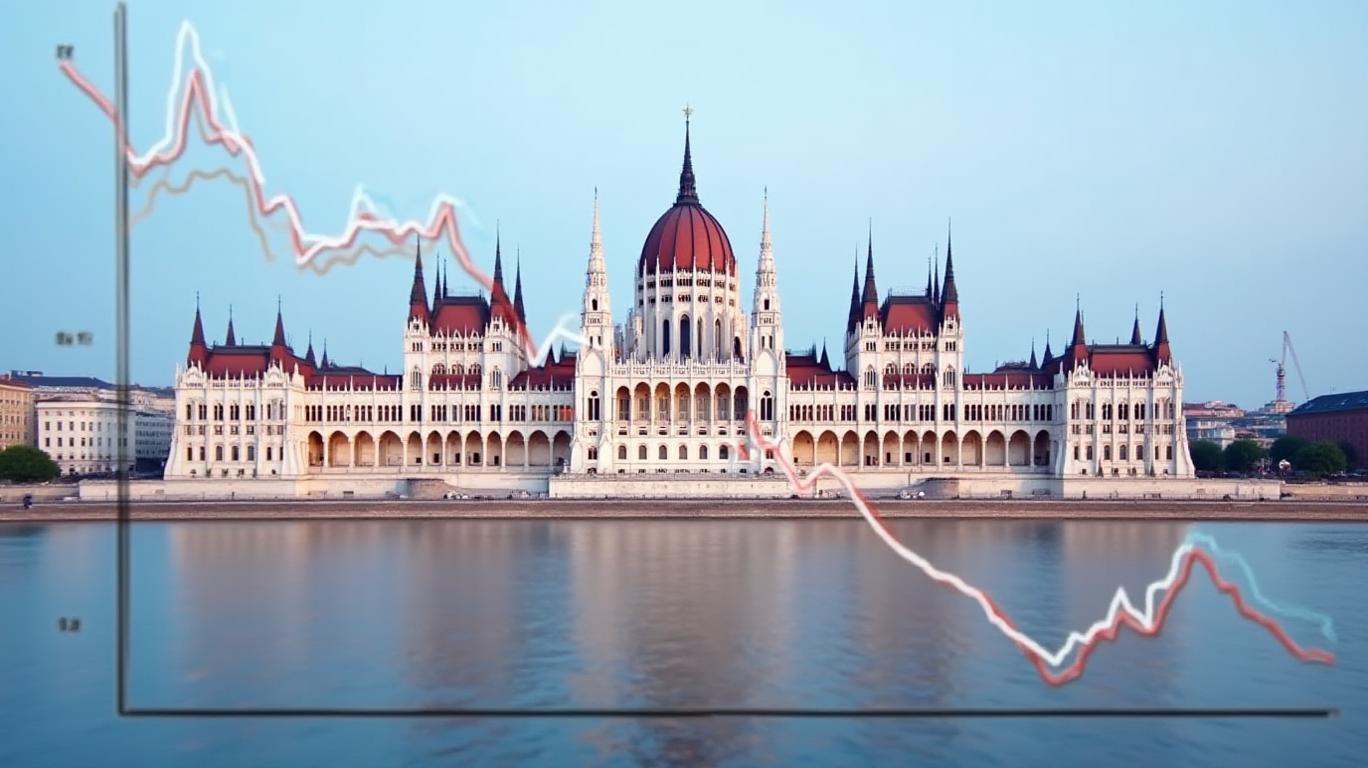Hungary's Inflation Target: Can the 3%-4% Range Hold?
Hungary’s central bank and government have set an ambitious goal to keep annual inflation within 3%-4% by the end of 2025—a critical benchmark for stabilizing the economy after years of volatility. Recent data shows progress, but lingering risks, including wage pressures and geopolitical uncertainties, could test this target.
Current Inflation Dynamics
In March 2025, Hungary’s annual inflation rate fell to 4.7%, down from a 15-month high of 5.6% in February, driven by declining energy prices and slower price growth for services and food. Core inflation (excluding volatile items like fuel and food) dipped to 5.7%, a significant improvement from February’s 6.2%. The
of Hungary (NBH) has maintained its base rate at 6.50%, citing lingering risks but hinting at potential cuts later in the year.The government’s fiscal strategy aims to support this downward trajectory. Projections indicate the budget deficit will shrink to 4.5% of GDP in 2025, from 5.4% in 2024, as reduced subsidies for utilities and phased-out windfall taxes ease fiscal pressure. Public debt, now at 73.8% of GDP, is expected to stabilize due to lower borrowing costs.

Policy Measures and Challenges
The government’s 21-point Economic Action Plan, launched in late 2024, focuses on three pillars: boosting household purchasing power, revitalizing SMEs, and stabilizing housing markets. Key initiatives include:
- SME Support: The Demján Sándor Program provides HUF 1.4 trillion (€3.2 billion) in loans and grants to help small businesses expand and modernize.
- Wage Moderation: A three-year wage agreement with unions aims to curb labor cost pressures, which have driven core inflation.
- Housing Relief: The 5% VAT rate on new homes is extended until 2026, while discussions continue on capping housing loan interest rates at 5%.
However, risks remain. Core inflation, excluding energy and food, remains stubbornly high at 5.7%, partly due to tight labor markets. Unemployment is projected to fall to 4.0% by year-end, but this could fuel further wage growth. Meanwhile, global factors like U.S. monetary policy and energy price swings could disrupt Hungary’s progress.
Geopolitical and External Pressures
Hungary’s economy is deeply intertwined with global markets. The automotive sector, a key growth driver, faces supply chain and trade risks. For example, BMW’s new electric vehicle plant in Debrecen—set to produce 150,000 cars annually—depends on stable global demand.
The government has also sparred with EU partners over defense spending, arguing that NATO’s 5% GDP target would “shoot the economy in the lungs.” With public debt already at 73.8% of GDP, Hungary cannot afford new fiscal burdens.
Outlook and Investment Implications
The IMF forecasts Hungary’s inflation to ease to 3.7% by year-end, within the government’s target range. If achieved, this would mark a significant turnaround from 2023’s peak of 26.2%.
Investors should monitor two key indicators:
1. Wage Growth: Nominal wages rose 13.5% since 2019, but real wage growth (adjusted for inflation) has slowed.
2. SME Loan Disbursement: Timely rollout of the Demján Sándor Program could boost GDP growth to 3.5% in 2025, as exports and private consumption recover.
Conclusion
Hungary is on track to meet its 3%-4% inflation target, thanks to falling energy costs, fiscal discipline, and targeted policies. However, risks like elevated core inflation and global uncertainties remain. The government’s success hinges on balancing wage growth with price stability and leveraging foreign investment in sectors like automotive. For investors, Hungary’s stock market—currently trading at a 20% discount to its five-year average—offers opportunities in sectors such as construction, energy, and tech. Yet, caution is warranted until inflation consistently stays within range.
As the National Bank of Hungary weighs further interest rate cuts, the coming quarters will test whether Hungary’s economic strategy can deliver lasting stability.

Comments
No comments yet